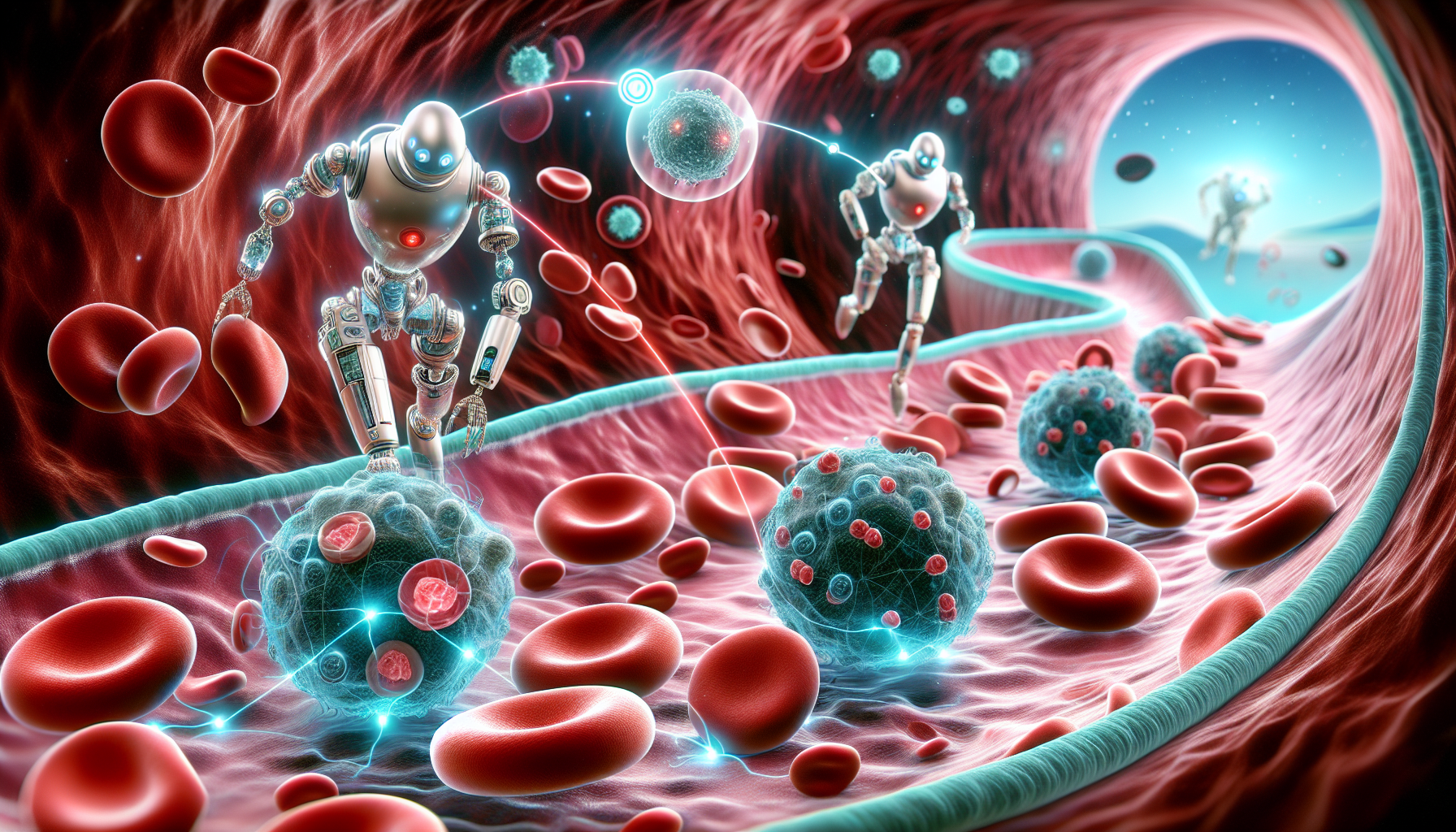The journey towards more effective cancer treatments has taken an astounding leap forward with the development of nanorobots designed to target and eliminate cancer cells. These microscopic marvels promise to revolutionize how we approach cancer therapy by honing in on cancer cells while sparing healthy tissues, thus reducing the harsh side effects associated with conventional treatments.
Key Findings and Mechanism
Targeted Action
The beauty of these nanorobots lies in their precision. They carry a hidden weapon—often an enzyme or therapeutic agent—that is unveiled only within the confines of the tumor. This targeted action ensures that healthy cells remain unscathed, dramatically minimizing collateral damage.
Environmental Trigger
Nanorobots operate based on unique conditions found in the tumor environment. Factors like pH levels, oxygen concentration, or specific enzymes serve as triggers, activating the nanorobots to release their therapeutic load exactly where it’s needed.
Preclinical Success
Early studies in mice have shown encouraging results. These tiny robots have successfully zeroed in on and eradicated cancer cells, leaving healthy cells untouched. This preclinical success paves the way for imminent human trials, bringing us a step closer to groundbreaking treatments.
Technological and Biological Insights
Design and Materials
Crafted from biocompatible materials, nanorobots are built for precision. They typically consist of a core carrying the therapeutic agent and a protective shell that ensures safe delivery to the target site.
Navigation and Delivery
Skillfully navigating through the bloodstream, nanorobots employ strategies such as enhanced permeability and retention effect for passive targeting or use ligands to actively bind to tumor-specific markers. This precise navigation ensures they accumulate at the tumor site effectively.
Safety and Efficacy
Ensuring the safety and efficacy of nanorobots is paramount. Extensive testing is conducted to confirm that therapeutic agents are released exclusively in the presence of cancer cells, guaranteeing minimal risk to healthy tissues.
Future Implications
Personalized Medicine
The potential to customize nanorobots for specific cancers and individual patient profiles heralds an era of more personalized and effective treatments, tailored to unique biological landscapes.
Combination Therapies
Nanorobots could complement existing treatments such as chemotherapy, radiation, or immunotherapy, working in tandem to yield superior results in battling cancer.
Potential for Other Diseases
Beyond cancer, the technology underpinning nanorobots holds promise for other conditions requiring targeted therapy, including cardiovascular and infectious diseases.
Conclusion
The rise of nanorobots in cancer treatment exemplifies a tremendous stride in medical research. Leveraging advanced materials and profound biological insights, these tiny warriors hold the potential to transform cancer therapy, offering a beacon of hope for more effective and gentler treatment options. As research progresses, the horizon for nanorobots expands, possibly reshaping not only cancer treatment but the broader medical landscape.

Leave a Reply